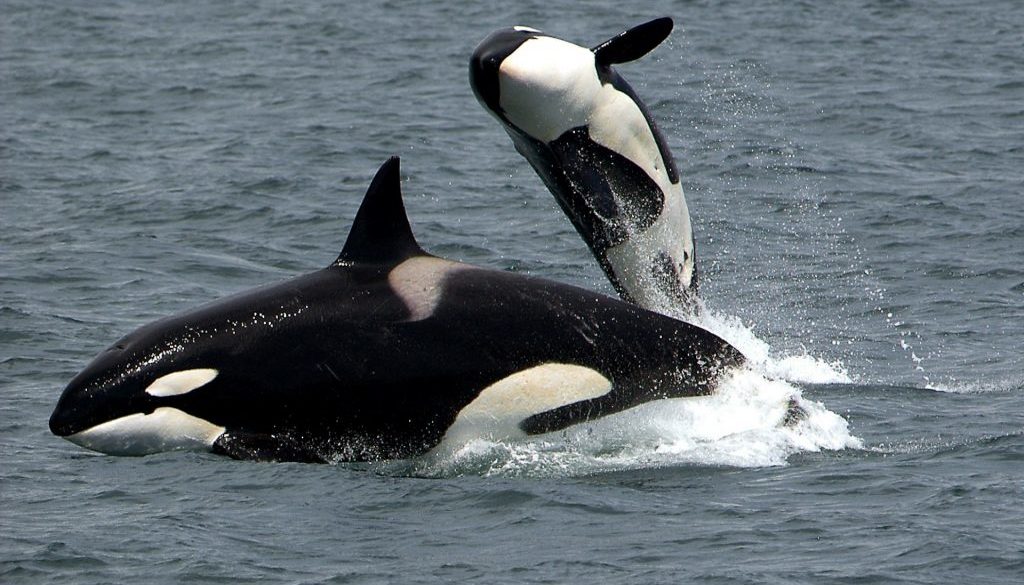The Story of the Grieving Orca Mother Is Heartbreaking—and a Call to Action
By Rhea Suh, Natural Resources Defense Council
Tahlequah is one of only 75 Southern Resident Killer Whales left in the wild. To save them and other imperiled wildlife, we must stop the Trump administration from gutting the Endangered Species Act.

Every summer, tourists cruise to the San Juan Islands, three hours by ferry from Seattle, hoping to catch a glimpse of iconic killer whales, called orcas, frolicking in the cool azure waters. This season, though, has been a bit different.
Since a baby orca died shortly after birth on July 24, her mother has carried the baby’s lifeless body along the water’s surface, being spelled in recent days by other adults in the pod trying to protect the mourning mother. Underweight and near exhaustion, Tahlequah, the mother whale, has refused to let her calf sink to the bottom and disappear for all time.
Scientists have seen orcas similarly grieve the loss of a calf, but seldom for more than two or three days. This has been going on for over two weeks. We’re not sure what Tahlequah is doing, but we know it’s something extraordinary.
It’s as if we’ve been watching one of the planet’s most majestic creatures drawing on the power of a mother’s grief to tell us, the only way she knows how, that her world is dying—that she, her family, and her entire community are in danger of sinking to the bottom and disappearing forever from the face of the earth.
Tahlequah is part of a group of Pacific Northwest orcas known as Southern Resident Killer Whales. With just 75 remaining in the wild—a 30-year low—they’ve had no successful births in at least three years. She’s one of just 14 remaining reproductive females.
These whales depend on salmon to survive. But together the whales and the fish are victims of an ugly web of environmental harm that includes dammed rivers, toxic chemicals, and disruptive noise from ships and boats that interferes with their ability to hunt, communicate, and navigate. Put it all together and the Southern Resident Killer Whales are on the brink of extinction, listed as endangered under the Endangered Species Act.
The most important wildlife protection law in the United States, the Endangered Species Act gives species like these a fighting chance. It provides vital safeguards for plants and animals facing extinction and for critical habitat they need to survive. It also provides protections for threatened species—those that, without help, are likely to become endangered in the foreseeable future.
Since Congress passed the law in 1973, it has saved more than 2,000 species—from the grizzly bear to the bald eagle—from being wiped off the map. Even now, the law is providing essential protections for hundreds of plant and animal species that are fighting to survive, including the great woodland caribou, the gray wolf, the northern spotted owl, the loggerhead sea turtle, and the largest animal on earth, the blue whale.
Now, though, this essential law itself is coming under threat. President Trump is working to make it harder to protect some species, including those imperiled by widening climate change or other global threats.
The administration has proposed a decrease in protections for critical habitat. And it has proposed injecting economic considerations into decisions about which species deserve protection, instead of relying on sound science. Current law already requires a cost-benefit analysis as part of the critical habitat designation, but not to decide whether a species is worth saving at all.
Instead of trying to roll back endangered species protections, the Trump administration should implement the law as it was intended. Under the law, for example, the administration could remove the four lower Snake River dams in eastern Washington State. These aging hydroelectric dams are starving the Southern Resident Killer Whales by blocking their most important food source, Chinook (or king) salmon, from historically important spawning grounds. The dams must be removed so the river, and the salmon it long supported, can be restored to their natural bounty.
It’s never been more important that we protect animals like Tahlequah from the ravages of environmental hazard and harm. Climate change, toxic chemicals, plastics in our oceans, industrial damage, widespread habitat loss due to development, and other environmental ills are combining to kill off entire species at a rate not seen since the dinosaurs disappeared 65 million years ago.
This is no time to reduce access to essential protections for endangered species, as Tahlequah’s public mourning attests.
“If Southern Residents were to become extinct, we would suffer an unacceptable loss to our environment, economy, and way of life,” Washington Governor Jay Inslee said last spring, when he designated a task force to develop an emergency plan to save the Southern Resident Killer Whales. “We would also lose an essential component of our marine ecosystem and an indicator of the health of our waters.”
We may never know how many millions of creatures, great and small, are quietly grieving in the shadows, watching their habitat become despoiled, wondering why their own offspring quickly perish, waiting for something that might keep them from slipping into oblivion.
We do, though, know this: With every species that disappears from the planet, we lose something that can’t be replaced, some essential piece of the vast ecological puzzle that keeps all of us healthy and whole.
Before we rush to make it harder to protect species at risk, before we try to put some kind of price tag on the animal kingdom, perhaps we should all look long and hard at those photographs of Tahlequah on a mission to keep her dead calf from slipping into the darkness, as thought she might be the last baby whale in the world. If she were, I wonder, how much might she be worth to us, and what would we pay to save her?

